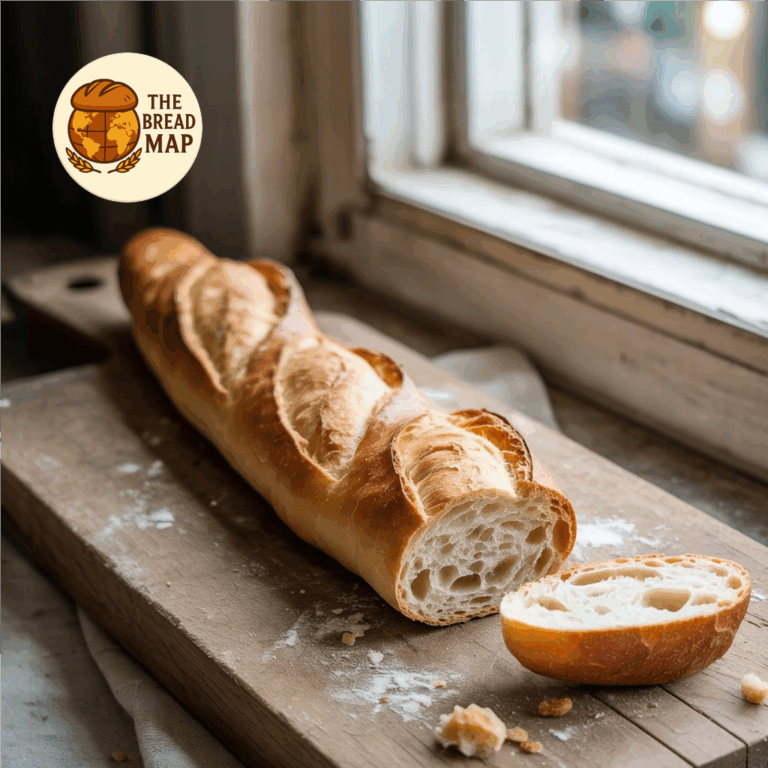
Introduction
Golden, crisp, and unmistakably elegant, the French baguette is more than just bread—it’s a symbol of national identity. Carried under arms during morning walks and served alongside nearly every meal, the baguette embodies everyday French life with extraordinary grace. Its seemingly simple recipe hides centuries of passionate baking tradition and cultural pride.
Historical Background
The baguette as we know it today is a relatively modern creation, with its current form emerging in the 20th century. While breads resembling baguettes have existed for centuries, it was in 1920 that a labor law—restricting bakers from starting before 4 a.m.—spurred the popularity of longer, thinner loaves that could bake more quickly. The term “baguette” (literally “wand” or “stick”) appeared around this time, and since then, the iconic loaf has become a fixture of French boulangeries and homes.
Region of Origin
The baguette is a national staple across all of France, but its cultural heart beats most strongly in Paris. In the capital, bakeries battle for bragging rights in the annual Grand Prix de la Baguette—an official competition to determine the city’s best baguette. The winner earns the right to supply fresh loaves to the Élysée Palace, home of the French president, for one year.
Ingredients and Preparation
The beauty of the baguette lies in its simplicity—just four ingredients conjure culinary magic:
- Wheat flour
- Water
- Salt
- Yeast (or sourdough starter, in traditional methods)
But the technique is anything but simple. The dough is carefully mixed and fermented over time to develop flavor and structure. Shaping is an art—each baguette is hand-formed into its signature slender silhouette. Scoring, or slashing the dough before baking, allows for expansion and creates those hallmark bursts in the crust. Finally, the loaf is baked at high heat for a crunchy, golden exterior and an airy, open-crumb interior.
Cultural Importance
The baguette isn’t just a food item—it’s a daily ritual. In fact, over six billion baguettes are consumed in France each year. It’s eaten at breakfast with butter and jam, served during lunch and dinner alongside cheese, meats, or salads, and bought fresh daily at the local boulangerie. In many families, buying the daily baguette is a cherished chore, often given to children. It’s not uncommon to see a crisp end (“le quignon”) missing from the loaf before it even makes it home.
In 2022, UNESCO recognized the baguette and the artisanal know-how surrounding it as part of the Intangible Cultural Heritage of Humanity—a testament to its significance and enduring charm.
Whether enjoyed with morning coffee or as a vessel for gooey camembert, the baguette is more than flour and water—it’s French spirit, baked into every bite.
Leave a Reply